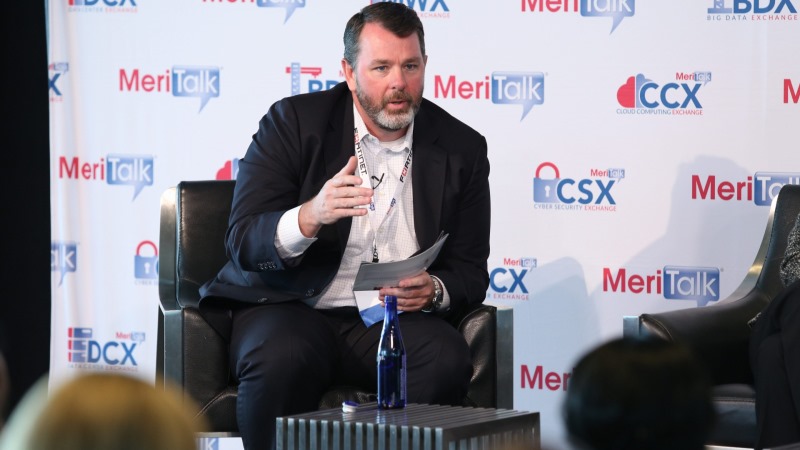
The United States can learn important cybersecurity lessons from Ukraine in its war with Russia, a conflict that has not come close to revealing Russia’s full cyber warfare capabilities, a top U.S. Navy cyber official said on Dec. 14.
At Splunk’s GovSummit 2022, Chris Cleary, the Navy’s Chief Principal Cyber Advisor, said Russia has held back on its cyber activity, even as its forces have often stalled on the battlefield. “I don’t think we’ve seen the Russians at their finest,” he said. “I think they’re keeping a lot of stuff in reserve that they don’t have to use right now. It’s probably not the best time for them to use these kinds of activities.”
In contrast, Cleary said, the Ukrainian military has taken effective measures to prevent Russia from bringing to bear the full weight of its cyber might.
“The Ukrainians did some things,” he said, “pulling their power grids away from the Russian power grids, putting a lot of things in manual operations so they are off the table for the Russians…(saying to them) if you want to turn my power plant off, you’re going to have to strike it.”
The U.S. government should take heed from Ukraine’s defensive steps, Cleary said.
“I think here in the U.S. we are not doing a good enough job of that,” he said. “The adversaries’ resources are dedicated and sophisticated, and these things we depend on, whether it’s critical infrastructure, a warfighting system, an information system…we have to understand what an attack looks like and take dynamic actions, both in cyber as well as some manual actions, to ensure the survivability, resiliency and continuity of operations.”
Even as he waded into international cyber politics, Cleary spent much of his presentation focused on the Navy’s recently released Cyberspace Superiority Vision (CSV), designed to guide and improve the service branch’s cyber posture. The vision features three core principles: secure, survive, and strike, which were emblazoned in red letters on a screen behind Clearly as he spoke.
Navy officials explained recently that the three principles are fundamental in maintaining maritime dominance and enabling sustained operations in cyber-contested environments. The cyber strategy is part of a larger Navy modernization effort, known as Operation Cattle Drive, to retire legacy systems in order to build a more agile and innovative force that can leverage information and better defending IT systems.
During his presentation, Cleary focused on the “survive” portion of the CSV, calling it the most important of the Navy’s core cyber principles. “The whole core tenet of survive is the idea that…we have to do everything we can to secure our environment,” he said. “But at the end of day…we have well resourced, sophisticated and dedicated adversaries that use cyberspace as a means of warfare that they will professionalize, and they’re doing a really good job of it.”
Cleary added that he is increasingly concerned about the speed that U.S. cyber adversaries – whom he did not name – are “professionalizing in this space at a rate that alarms me because all things considered, it’s a relatively inexpensive way to deliver capabilities, to build a credible deterrent of your adversaries.”
To fight back, he emphasized the importance of partnerships between the military and industry. “We all need to come together as a public-private partnership,” he said. “Because at the end of the day, I worked in the private sector. And the realization came to me that the military really makes nothing…everything we get comes from the defense industrial firms. This space is going to be no different.”
“We need the defense industrial base, we need innovators to help us do our job,” Cleary said.
